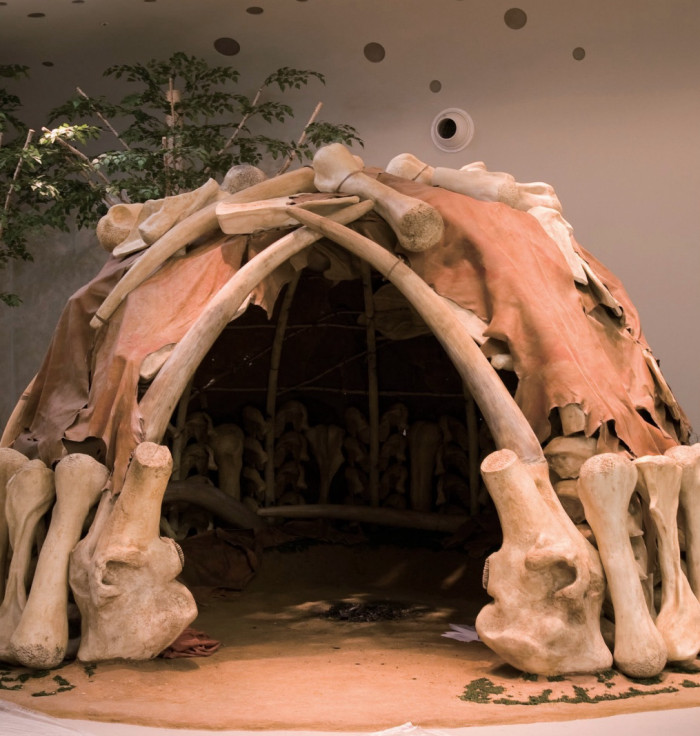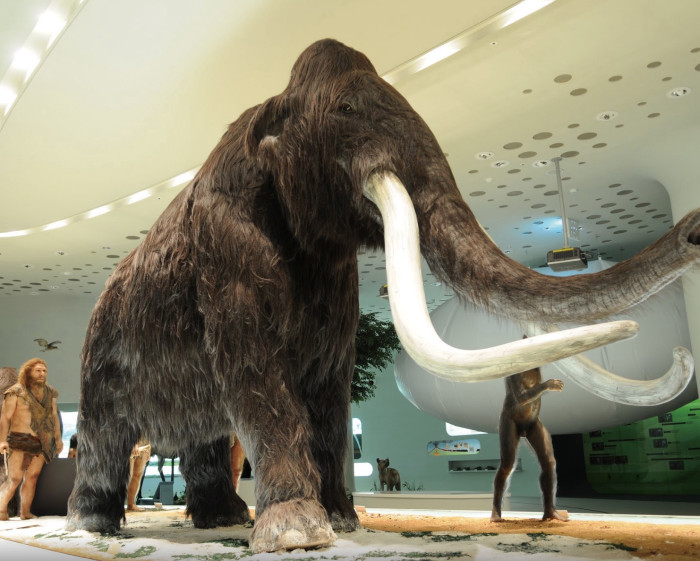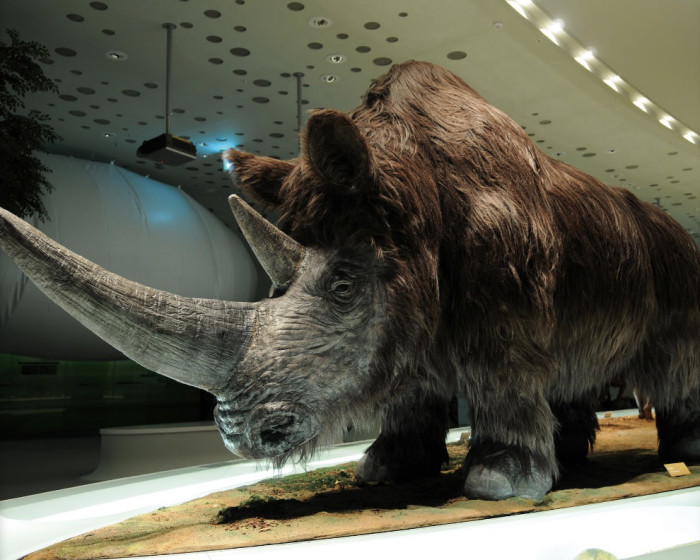지지씨
Evolution of Humanity, the Great March Forward - 4. The polar regions and the African continent

The ability to adapt to a changing climate in order to survive is the strongest advantage possessed by humanity. For the last several million years, the planet has experienced repeated cycles of cold and warm weather. The volume of ice increased during glacial ages, but decreased during warm interglacial ages. Such changes in the weather conditions led to changes in the sea level and, consequently, all natural environments. These climate changes posed fundamental threats to all life forms on the planet; however, the human evolution that had started in Africa was not held up by the extremely cold Ice Ages. Humans put on thicker leather clothes, made more sophisticated tools and hunted more animals. They found diverse edible plants, thereby securing a more stable food source, built warmer houses and overcame the cold. In this way, the Paleolithic men who successfully evolved their adaptability to cold weather were able to live everywhere in the world, except for the South Pole.

Mammuthus primigenius is commonly known as the ‘woolly mammoth’ widely recognized as a creature of the Ice Age. The woolly mammoth had a shorter trunk than modern elephants, but the tusks were so long they touched the ground, making them suitable for digging the snow for food. As mammoths could find food even during the coldest winter, they were widely distributed throughout Europe, Asia, Siberia, and the North American tundra during the Ice Age. Their morphology and habits are well known because well-preserved mammoth fossils have been discovered in the frozen ground in Siberia. Woolly mammoths were well adapted to the cold climate, having a layer of fat up to 8cm thick under the skin, which was covered with a coat consisting of a shorter inner layer and a longer outer layer of ‘guard hair’. Their ears were far smaller than those of modern elephants, which helped reduce heat loss. Therefore, woolly mammoths were much better adapted to the severe cold weather of the Ice Age than any other animal, enabling them to live throughout northern Eurasia, Alaska, and the northern region of North America as well as Siberia.
As a specimen of a woolly mammoth was found with a spearhead of the early North American embedded in its bone, some scientists believe that hunting was the main factor that contributed to the extinction of the woolly mammoth. Many cave paintings depicting hunts of woolly mammoths by people of the prehistoric age remain to this day. Due to excessive hunting and climate change from cold to warm environments, which led to the shrinkage of its habitat, the woolly mammoth gradually became extinct. Judging from the discoveries of bones and tusks in areas of North Hamgyeong Province including Onseong, Hwadae, and Gilju, woolly mammoths are now known to have lived on the Korean Peninsula.

The woolly rhinoceros is an extinct species of rhinoceros that is believed to have lived throughout Asia and northern Europe some 1.8 million years ago during the Pleistocene epoch. The binomial name of the woolly rhinoceros is Coelodonta antiquitatis. Well-preserved specimens of the woolly rhinoceros have been discovered in frozen ground at a temperature of minus 40 degrees in Europe and Siberia. They were typically around 4 meters in length with a shoulder height of 2.2 meters, and weighed about 3 tons. It had two horns on its skull, including a larger anterior one at the end of its snout and a smaller one between the eyes, and its body was covered with a thick layer of fur. Its prominent physical characteristics include a stocky body, long and thick fur, small ears, and short, thick legs. The woolly rhinoceros was the largest land animal of the Ice Age after the woolly mammoth (Mammuthus primigenius). It is conjectured that the woolly rhinoceros also lived on the plains of the region where the temperature was relatively milder, rather than in glacial regions. Woolly rhinoceros also appear in stone-age cave paintings and engravings. In Korea, their fossils have been found in Taebaek, Gangwon Province.
Director|Kidong Bae
Planning|Hanyong Lee
Curator|Jonghun Kim, Hyunchul Sim
Exhibition Space Construction|X-TU
Design|Hyojin Jang
Education|Jungwon Lee, Junghyun Lee
Hyungmo Seong, Hogyun Kim, Kyungmin Kim, Sujin Jo
Ancient Human Model|ATELIER DAYNÈS, Kim Seong-mun
Photograph|Kyungha Kim
<ggc의 모든 콘텐츠는 저작권법의 보호를 받습니다.>
- 글쓴이
- 지지씨
- 자기소개